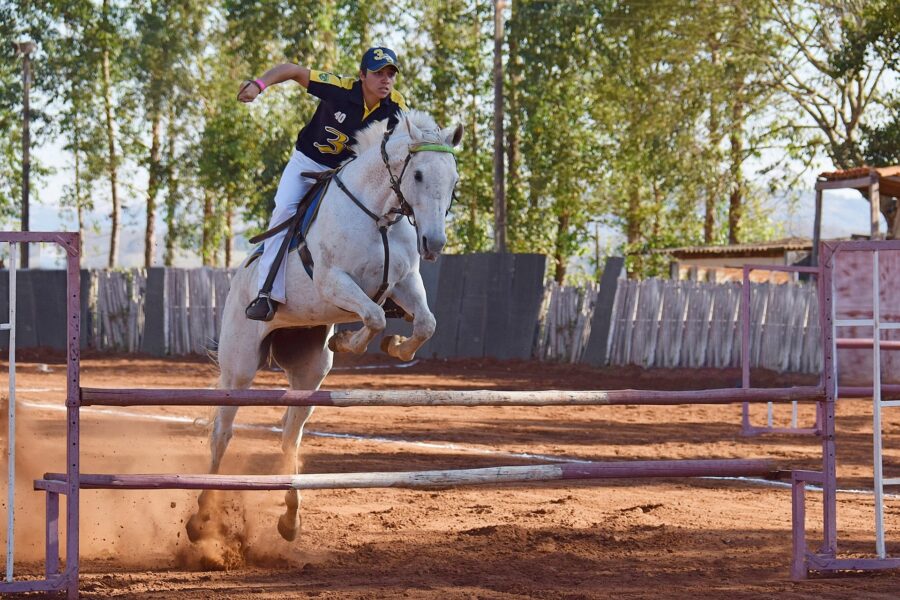Horse Jumping Equipment: Different Kinds and Why It Matters

The right horse jumping equipment can make a big difference in the success of your jumping competitions. It can also help you and your horse achieve optimal training.
There are many types of jumping equipment to choose from. It’s important to know how essential each piece is to the overall design of your course and the safety of both you and your horse.
Tables
Tables are a type of fence with height and width, and the top is one piece of material (unlike an open oxer). Like oxers, it simultaneously encourages the horse to jump over the obstacle. However, some horses may touch down on the top before jumping off, or “bank.”
These are generally used at lower levels because they require real riding and keeping the horse straight. They are increasingly common at higher levels as the rider increases their skill level.
A sunken road is a type of combination fence consisting of several obstacles placed within a 1-3 stride distance of each other. These fences are meant to be jumped as a series and can include various elements such as banks, logs, water, and ditches.
Brush boxes are another essential element of horse jump equipment. They have a solid base and several feet of brush protruding from the top, up to six feet high.
Poles
Poles are an essential part of any horse jump equipment package. They make creating a basic training jump easy and are an excellent tool for practicing gymnastic exercises before jumping larger fences.
The first step in building your jump is to cut two 6ft. PVC pipes that fit together to form the vertical side of your jump.
These poles are strong and resilient enough to prevent damage if your horse hits them during a fall. You can also use landscaping timber if you want a heavier material.
You can find a variety of equestrian poles at your local tack store. They come in a range of colors and designs. They’re also lightweight and durable, making them an excellent option for beginners.
Jump Cups
Jump cups are a crucial component of every hunter-jumper course. They hold the poles in place while allowing them to dislodge with minimal force when they come in contact with the jumping standard.
A conventional jump cup for equestrian activities includes two curved plates supporting the ends of two jump poles and a hinge that allows the curved plates to be independently rotatable relative to each other and to a single pinned attachment point to a conventional jump standard.
Each curved plate has a rear-facing flange that straddles the jump standard and includes aligned holes for receipt of an L-shaped fastening pin or rod to secure the jump cup at a designated elevation.
Alternatively, the flanges of each curved plate may be positioned at an infinite number of angles between the vertically spaced holes formed through the side surfaces of a conventional jump standard to create a barrier fence when creating a jump chute for the the free jumping of horses.
Standards
Whether you’re just getting started in equestrian competitions or are a more experienced rider, you can only do with some essential pieces of horse jump equipment. One of these is a whip and spurs, which allow you to communicate with your horse and prevent them from taking unnecessary risks.
Another essential piece of rider’s equipment is a solid jump, which provides a safe jumping area for your horse to clear, preventing them from slipping or falling. The most common types of solid jumps are made with wood or lumber and nailed together.
The convertible horse jump standard system allows you to adjust the height, depth and width of a solid jump by adding or removing jump poles, which makes it perfect for many different styles of riding competitions and events. It is a great way to save money on equipment while providing your horse with an excellent, safe jumping area.